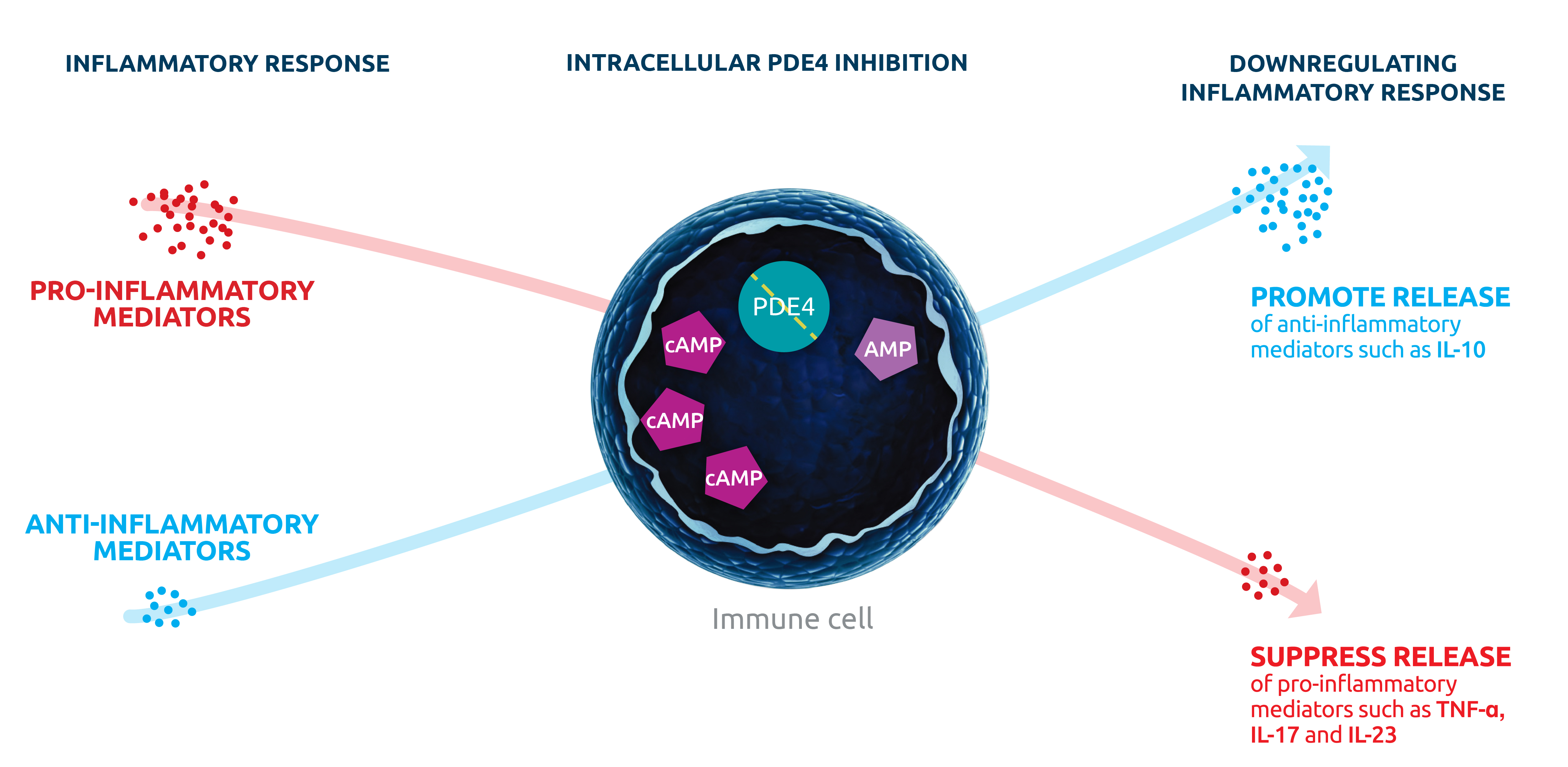THE ROLE OF PDE4 IN THE INFLAMMATORY CELL1*
PDE4 IS THE DOMINANT PDE IN INFLAMMATORY CELLS AND FUNCTIONS TO TERMINATE THE ACTION OF cAMP, AN INTRACELLULAR SECONDARY MESSENGER

cAMP maintains immune homeostasis
- PDE4 inhibition elevates intracellular cAMP levels
Increased cAMP downregulates the inflammatory response
- cAMP suppresses release of pro-inflammatory mediators
- cAMP promotes the release of anti-inflammatory mediators
These pro- and anti-inflammatory mediators have been implicated in psoriatic arthritis and psoriasis.
OTEZLA, A SELECTIVE SMALL-MOLECULE INHIBITOR OF PDE4, DEMONSTRATED PHARMACOLOGY IN CELLULAR MODELS1*
- OTEZLA inhibits production of TNF-α in human peripheral blood mononuclear cells, synovial cells, plasmacytoid dendritic cells, epidermal keratinocytes, lamina propria mononuclear cells, and whole blood
- Other effects include the inhibition of IFN-γ and IL-23A (IL-23p19) production and the elevation of IL-10 production by mononuclear cells, inhibition of GM-CSF, IFN-γ, TNF-α, IL-5, IL-13, and IL-17 by T cells, and the inhibition of IL-8 production by polymorphonuclear cells
- OTEZLA also inhibited the formation of osteoclasts, cells that can cause bone resorption
* Clinical significance has not been established.
cAMP, cyclic adenosine monophosphate; IL, interleukin; PDE4, phosphodiesterase 4; TNF, tumour necrosis factor.